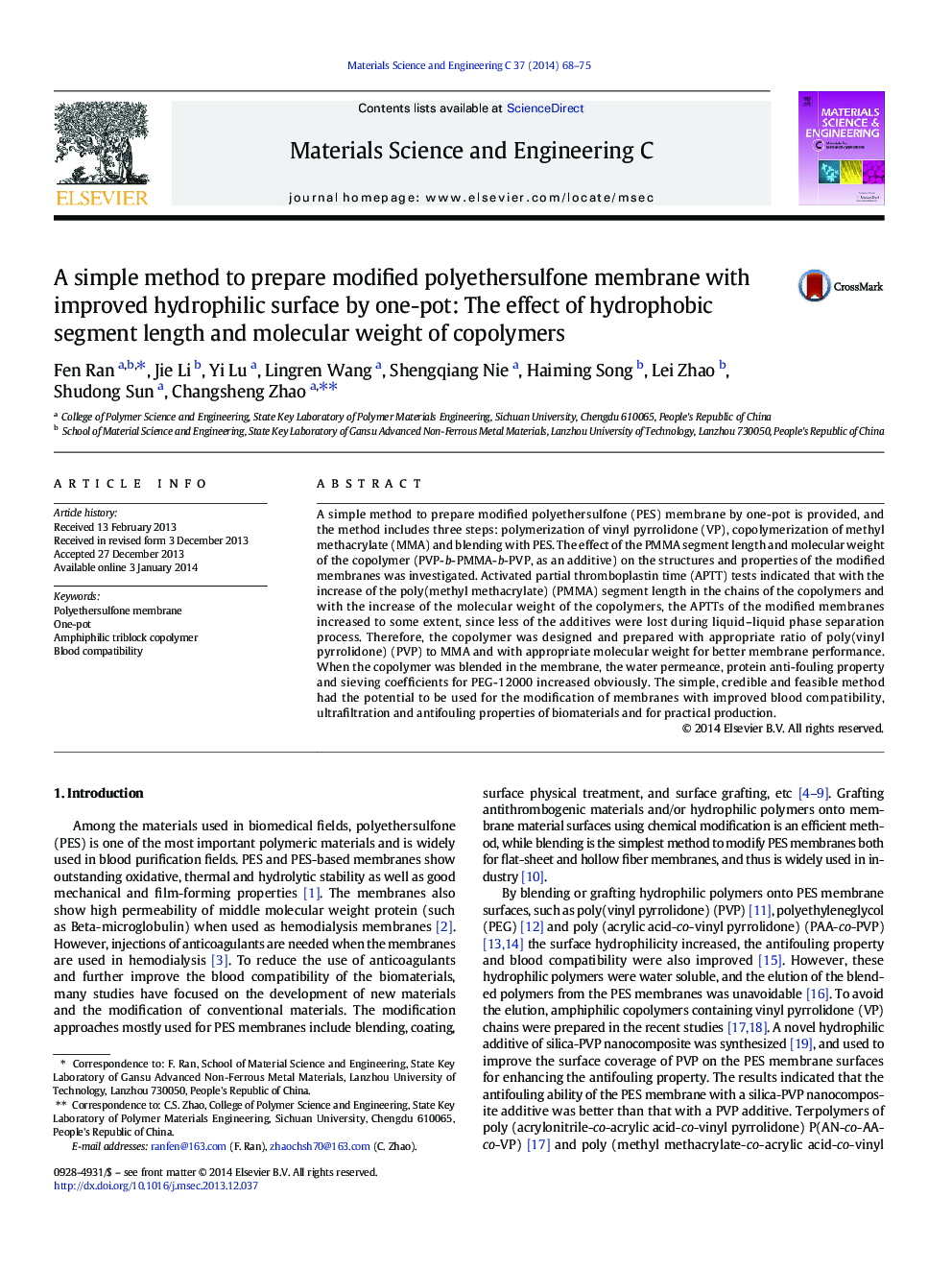| Article ID | Journal | Published Year | Pages | File Type |
|---|---|---|---|---|
| 1428985 | Materials Science and Engineering: C | 2014 | 8 Pages |
•Modified membrane was fabricated by one-pot method including additive synthesis and blending with PES.•Hydrophilic surface was obtained due to the migration and self-assembly of copolymer on membrane surface.•The blood compatibility and antifouling property of the modified PES membrane were improved.•The Mn and rMMA/PVP values of the copolymer play important roles in its elution during preparation procedure.
A simple method to prepare modified polyethersulfone (PES) membrane by one-pot is provided, and the method includes three steps: polymerization of vinyl pyrrolidone (VP), copolymerization of methyl methacrylate (MMA) and blending with PES. The effect of the PMMA segment length and molecular weight of the copolymer (PVP-b-PMMA-b-PVP, as an additive) on the structures and properties of the modified membranes was investigated. Activated partial thromboplastin time (APTT) tests indicated that with the increase of the poly(methyl methacrylate) (PMMA) segment length in the chains of the copolymers and with the increase of the molecular weight of the copolymers, the APTTs of the modified membranes increased to some extent, since less of the additives were lost during liquid–liquid phase separation process. Therefore, the copolymer was designed and prepared with appropriate ratio of poly(vinyl pyrrolidone) (PVP) to MMA and with appropriate molecular weight for better membrane performance. When the copolymer was blended in the membrane, the water permeance, protein anti-fouling property and sieving coefficients for PEG-12000 increased obviously. The simple, credible and feasible method had the potential to be used for the modification of membranes with improved blood compatibility, ultrafiltration and antifouling properties of biomaterials and for practical production.
